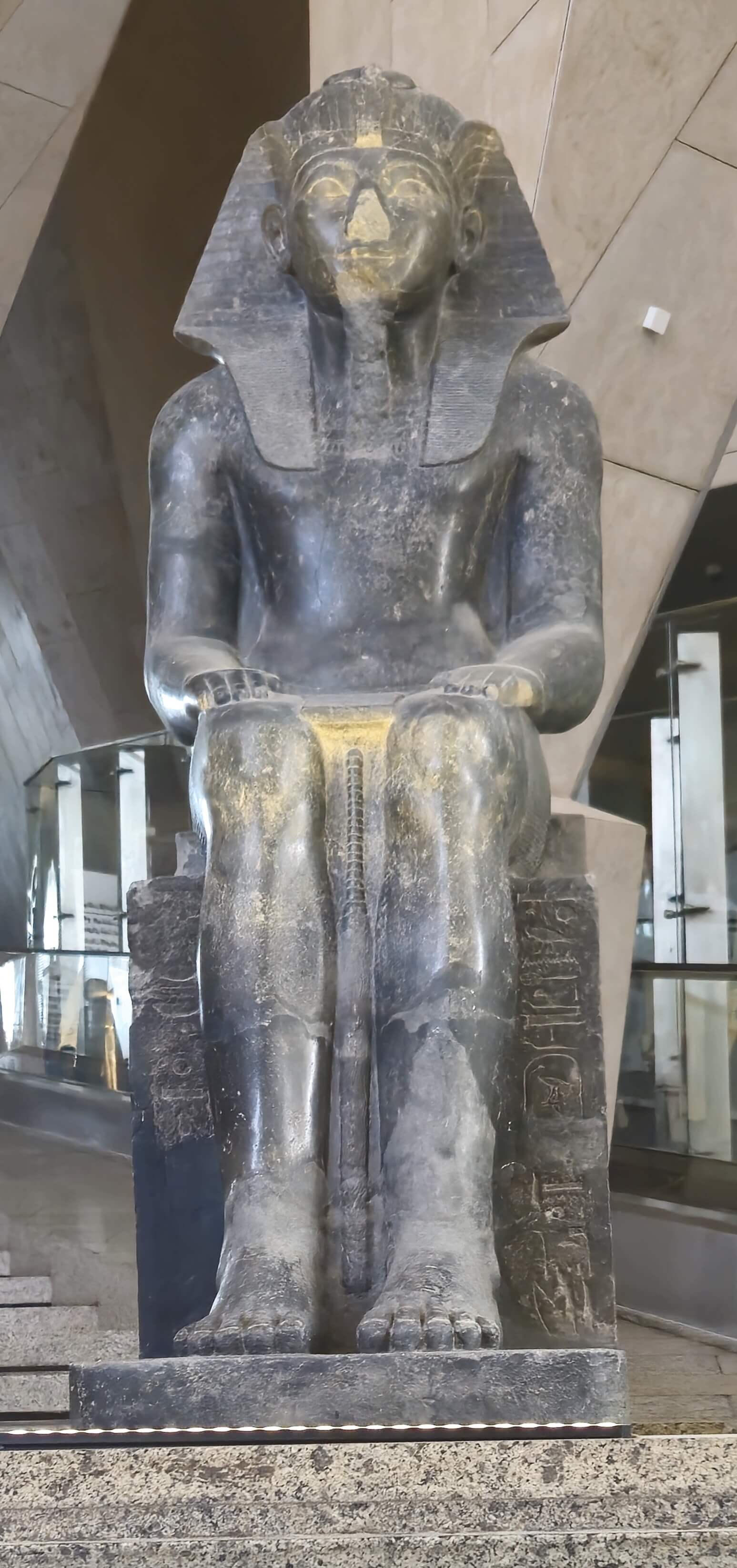
GEM 3769
Seated Statue of King Thutmose III
In the grand narrative of ancient Egypt, few rulers left a legacy as enduring as Thutmose III, the sixth pharaoh of the 18th Dynasty (reigned c. 1479–1425 BCE) during the New Kingdom. This seated statue, discovered at Karnak Temple in Thebes (modern-day Luxor), presents the king in traditional form—calm, authoritative, and immortalized in stone. He sits on a royal throne with his feet resting atop a representation of nine bows—a powerful symbol used throughout ancient Egyptian history to represent the traditional enemies of Egypt, now subdued beneath his rule.
Thutmose III initially came to power as a young child, but for the first 22 years of his reign, he ruled jointly with his stepmother and aunt, Queen Hatshepsut, who took on the full powers of a pharaoh. It was only after her death that Thutmose III assumed sole rule and began one of the most successful military campaigns in Egyptian history. Often referred to by modern historians as the “Napoleon of Egypt,” Thutmose III led at least 17 military expeditions, extending Egypt’s reach deep into Syria, Canaan, and Nubia. His decisive victory at the Battle of Megiddo stands as one of the earliest recorded battles in history ... اكتشف المزيد مع البريميوم!
اكتشف القصة الكاملة لهذا الأثرقم بالترقية للبريميوم للوصول إلى الوصف الكامل، الأدلة الصوتية، والمحتوى الحصري لجميع القطع الأثرية.استمتع بالوصول الكامل إلى الصوت والوصف لأهم القطع الأثرية في المتحف الكبير بسعر 1.99 دولار
تبحث عن قطعة أثرية أخرى؟